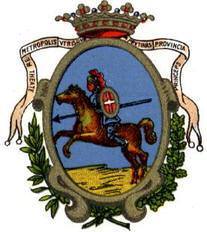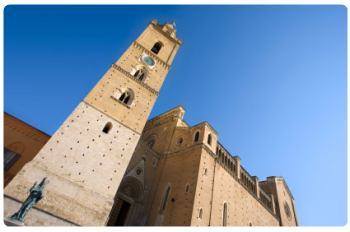|
History of Chieti
|
The
ancient origins of the city of Chieti sink in the mists of time. According to
legend, Achilles, the Greek hero, founded the centre. The civic coat of
arms shows Achilles on horseback, holding a shield with his left hand, on
which appear the four keys symbolising the city gates. The name Teate existed
already in 1000 when the city became capital of the Marrucini family. A
people of war, the Marrucini fought first against Rome and then, after a great
peace, they allied themselves with the Romans against Pirro, Hannibal and also
against Perseus king of Macedonia. |
|
 The
Marruccini people named the main course of the city, the
beautiful Corso Marruccino. In Roman times dates
back to the first organic urban planning, the route,
various temples, the theatre, the amphitheatre and a
grandiose cistern with adjoining thermal baths. In the
middle of the empire, it became a town hall and was
enriched with numerous monuments. At the end of the
Empire it was subjected to the siege of the barbarians.
From that moment on, a phase of decline began, which
ended with the siege of Pipino (801). The
Marruccini people named the main course of the city, the
beautiful Corso Marruccino. In Roman times dates
back to the first organic urban planning, the route,
various temples, the theatre, the amphitheatre and a
grandiose cistern with adjoining thermal baths. In the
middle of the empire, it became a town hall and was
enriched with numerous monuments. At the end of the
Empire it was subjected to the siege of the barbarians.
From that moment on, a phase of decline began, which
ended with the siege of Pipino (801).
Her annexation to the Duchy of Spoleto led her to become the bulwark
of the southern border of the Empire. It reached its maximum splendour with
Carlo I, who designated it the capital of Abruzzo Citra, the
territory to the right of the river Pescara. Although the rise of the city
of L' Aquila limited its fame, in the fifteenth century it became a
metropolis of Abruzzo, with the right to beat its own currency, as an
archiepiscopal seat.
In the 17th and 18th century it was reaffirmed as a cultural centre for the
presence of the Scolopi and the archaic shepherds of the Tegea colony. In
the 17th century, the city took on its present appearance thanks above all
to the architectural works erected by the Church.
The arrival in Chieti of the Scolopi and Jesuits led to the
rebirth of the colleges, important centers of study and diffusion of
culture. The presence of the Marquis Romualdo de Sterlich, promoter
of the Enlightenment culture, was important. Born in Chieti De
Sterlich, he was one of the first Italians to read and comment on the works
of Montesquieu, Rousseau, Voltaire and other European
Enlightenmentists. Thanks also to his writings and letters, it has been
possible to outline the approach to the Enlightenment of our Italy.
In the Italian Risorgimento Chieti actively fought for the unity and
independence of Italy. After the two World Wars, the city has seen its
inhabited area expand considerably both in the upper and lower parts of the
city, the Scalo. Numerous structures of public utility have been built, such
as the Civil Hospital and the Sanatorium and the Free University "G. D'
Annunzio"was born.
Ostelli Italia
Hotel a Chieti
Ostelli a Chieti
Carte Chieti Karte von Chieti Mapa Chieti Map of Chieti
Carte Abruzzes Karte von Abruzzen Mapa Abruzos Map of Abruzzi
Carte d'Italie
Karte von Italien Mapa Italia Map of Italy
イタリア の地図 |
